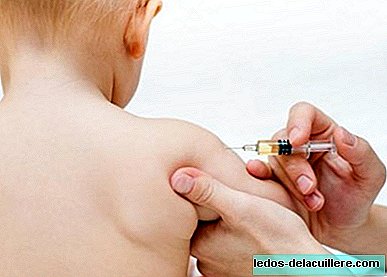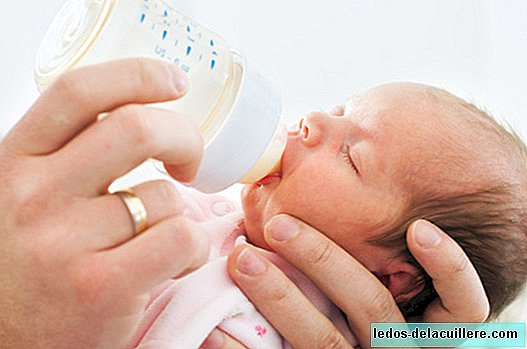
We know that in the future vaccines will not be administered as is done now, with a needle and a liquid that produce pain, but since we do not know when we will see such a thing, we have the moral obligation of trying to make children suffer as little as possible from the vaccination act.
That is why for years the different strategies that can help relieve pain are being studied, especially in babies, because they do not understand why we are hurting them. A new study wanted to compare various strategies and have seen that the application of a concrete cream could help decrease the pain a little.
Anesthetic cream, sucrose and parental comfort
The study was published last December 12 in the magazine CMAJ (Canadian Medical Association Journal), and it was carried out with 352 healthy babies between 2012 and 2016. With all of them different pain control strategies were studied while they were administered the first year systematic vaccines, dividing all the children into four study groups.
In one of the groups, the parents received video instructions on how to calm the baby; in another group, the parents watched the same video and the baby was given a sucrose oral solution; In the third group, the parents watched the video, the baby was given oral sucrose and put on an anesthetic lidocaine cream in the area of the puncture; and the babies of the last group were given a placebo treatment (The parents and the professional believed that they were doing something to relieve the pain, when the treatment did not really do anything).
Only babies who received cream cried less
To compare children in all groups, their behavior was observed before the vaccine, during the vaccine and after the vaccine. There were no differences in the before in any of the groups, but at the time of the administration of the vaccine: the children of the group that had received anesthetic cream in the vaccine area cried less than the rest.

The rest of the children cried the same, whether the parents comforted the baby or if only placebo treatment was done, and those who were given oral sucrose even cried the same. Other studies, on the other hand, have found that oral sucrose administration is an effective method to alleviate pain, or even non-nutritive suction. If in addition, the suction is combined with something ingested, as in the case of tetanalgesia, the result could be even better.
The study researchers explained in Medline their conclusions in this regard:
We found that, when used consistently during vaccine injections in the first year of life, only liposomal lidocaine in combination with the parent instruction video and orally administered sucrose showed a benefit in acute pain when it was compared with placebo, video alone, video and sucrose together.
And then, what would be the best strategy?
According to this study, of the methods analyzed only anesthetic cream is useful. But other studies use other methods that have been overlooked here, so the best strategy could be a combination of several methods.
According to the evidence analyzed, it seems that the best thing could be to do something like this:
- Apply anesthetic cream before the administration of the vaccine.
- Offer the chest a couple of minutes before the administration of the vaccine, so that the baby is receiving milk and is actively sucking at the time of injection.
- If you do not breastfeed, offer a sucrose solution a couple of minutes before and the pacifier at the time of the vaccine.
- To carry out some kind of distraction during the vaccine: a song, a story if the child is older, ... something that makes him think about other things while he is being vaccinated (here the professional can help).
Also, although this is not based on any study, but on my personal experience, once the baby is crying after the vaccine, it may be a good idea. modify your posture. If he is still in his arms, rock him; hug him vertically if he has been vaccinated horizontally, etc. It is a way to change the visual and physical stimulus a little and some babies calm down by doing so.
Photos | iStock
In Babies and more | They invent a device to relieve the pain of vaccines, Vaccines, how to avoid pain and my dialogue with the "teacher" (I) and (II), what should we consider after vaccines are given?












